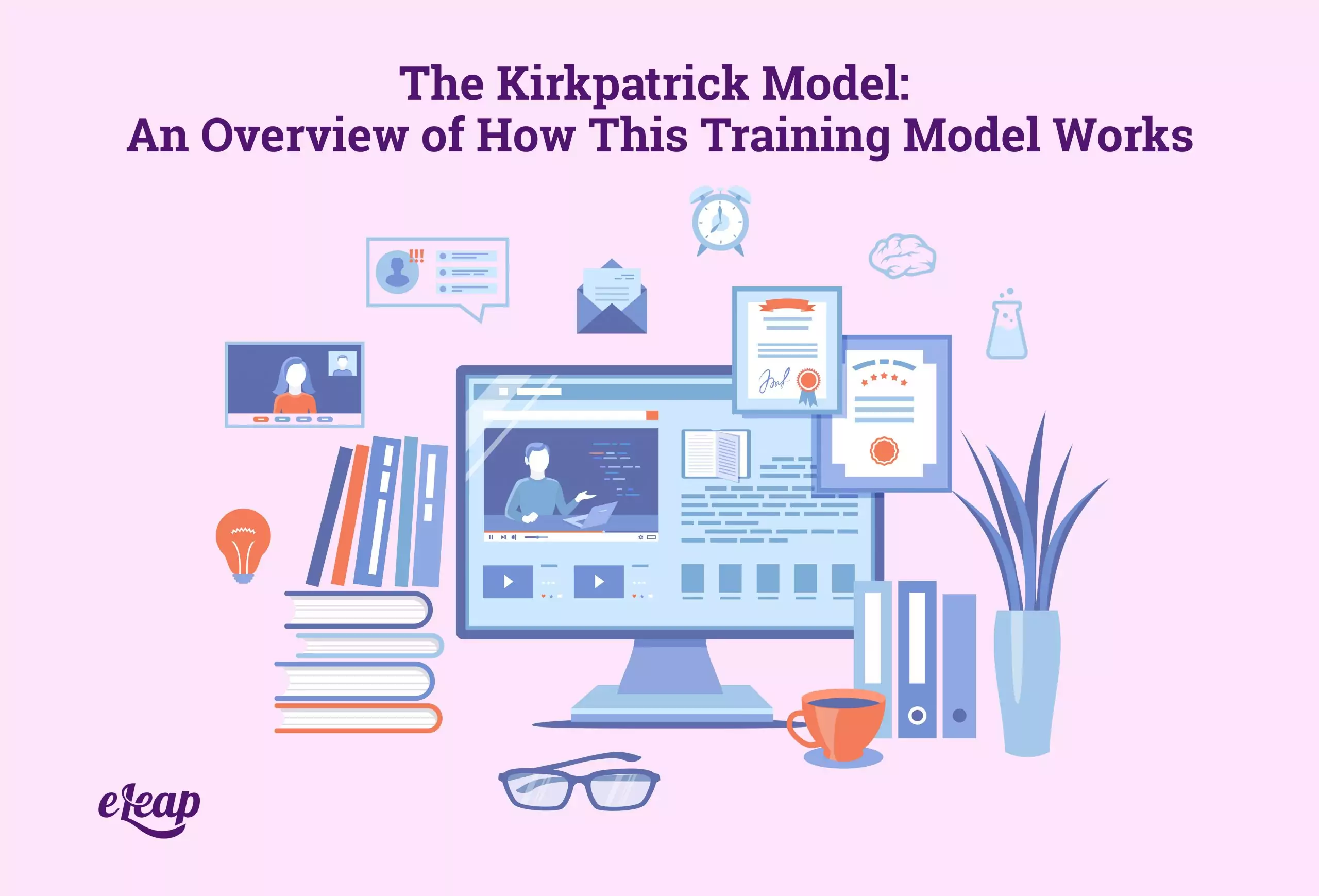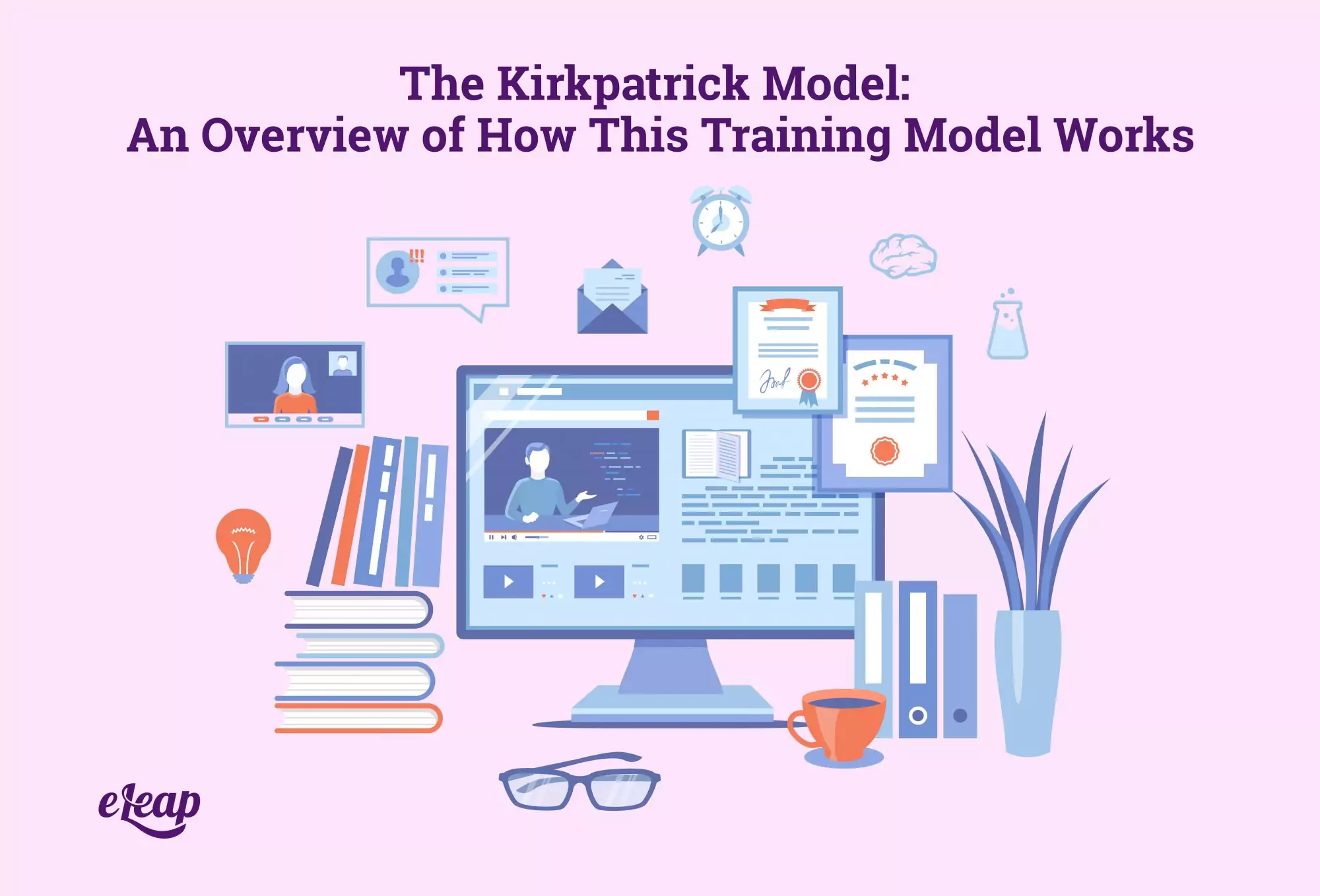The Kirkpatrick Model: An Overview of this Training Model

Building a more effective training system is critical. If you’ve identified breakdowns and bottlenecks preventing your learners from fully absorbing the information being presented, finding solutions to that problem should be a priority. In a perfect world, those solutions ensure that your learners are engaged and moving forward.
With that being said, you also need to make sure that your solutions actually achieve the desired goal. You need to measure their effectiveness. Doing so can be hard, though.
Thankfully, there are tools out there that can help. One of those is the Kirkpatrick Model – it’s a useful tool for identifying problems, but also for measuring the success of your solutions. In this article, we’ll provide a high-level overview of the Kirkpatrick Model to give you a better understanding of what it’s all about. To download free eBook, click here.

The Four Levels
If you’ve done much research into training management and L&D tools, you have no doubt come across a graphic representation of this model. It looks like a pyramid broken down into several different levels. Those levels are as follows:
- Reaction
- Learning
- Behavior
- Results
Let’s take a quick look at each of those four levels to determine what it involves and what it can offer.
Reaction: Level 1 is reaction. Here, you will begin your learner evaluation efforts with a focus on how they felt when they finished the training. While there are several ways you can do this, surveys are commonly used. However, you can also use sit-down meetings, questionnaires, and other methods.
Learning: Level 2 is learning. Here, you are focused on ensuring that your learners absorbed what they were supposed to during the training. You can do this through testing or through hands-on demonstrations depending on the situation.
Behavior: Level 3 is behavior. Here, you need to measure whether the training had the desired effect on learner behavior. This is usually done by observation within the workplace. Does the employee put new knowledge to work in their daily responsibilities? How do they use the knowledge or skills gained?
Results: Level 4 is results. Here you measure whether your training program delivered the desired results. Note that this requires that you mapped out results in the first place. You must have a goal in mind for your trainees to strive toward to measure progress and results. Ultimately, this level is really about determining ROI.
Using the Kirkpatrick Model
Now that you have a better idea of how the Kirkpatrick Model works, we need to discuss actually putting it to work on your behalf. Unlike other models, this one is designed for you to begin at the end and work backward. We’ll lay everything out below.
Identify Results
To determine the ROI of your training program, you need to know what results are necessary. What results would tell you that the program is a success? This will dictate many other things and will require time and strategy to determine. Results could be virtually anything, but they should be meaningful to your organization. Some common types of results include:
- Excellent customer service
- Great customer satisfaction
- Improved employee retention
- Sales growth
Once you know what you want to see in terms of results, you can move on to the next step.
Specify Behavior
With the results nailed down, you need to determine what behavior you need to see from employees. What behavior will influence the results? What behavior will be necessary to achieve them?
For instance, if your goal is to provide an excellent customer service, then each caller to should spend less time on hold, or even to spend no time on hold. If your goal is to improve employee retention, the result is a change in attitude toward the organization or progression down a specific career path.
The point is, that without a specific behavior tied to the results you need to see, it becomes impossible to measure success or progress. Make sure to bring other stakeholders into the conversation, as well, as other leaders and managers will have valuable light to shed on this question.
Deliver Learning
The third step (in reverse order) is learning. Here is where the rubber meets the road, so to speak. Learning content should be based on the desired result and focused on creating the behavior you need to see that will drive those results.
For example, if your ultimate goal is employee retention and your desired behavior is progress toward a better position for a specific employee, the learning content should speak directly to those needs and provide a way to build the skills and knowledge necessary for that employee to move forward. Or, if your goal is to improve customer service and the desired behavior is less time on hold, the training should provide your employees with improved problem-solving and communication skills to speed up and improve the accuracy of customer/employee interactions.
Measure Reaction
Finally, we come to the final tier – reaction. You need to measure the learner’s reaction to the content you have prepared. Doing so requires that you have a plan, as well as metrics in place so that you can take that measurement quickly and accurately. Testing is the simplest and most common form of measurement, but there are many other options available, including:
- Hands-on demonstrations
- Sit-downs and discussions
- Observed behavior in the workplace
- Interviews or surveys
Is the Kirkpatrick Model Right for You?
Measuring the effectiveness of your L&D program is not optional. Without an accurate gauge, it is impossible to determine ROI, whether you need to make adjustments, your learners are actually absorbing the knowledge they need. The Kirkpatrick Model is a widely-used tool to help measure those aspects, but it is not the only one.
You’ll find many other formal models out there, as well as informal measurement methods, including learner feedback, instructor feedback, tracking and in-depth analytics surfaced by your LMS, and much more. At eLeaP, we want to help ensure that your training is as effective as possible – contact us today to learn more.